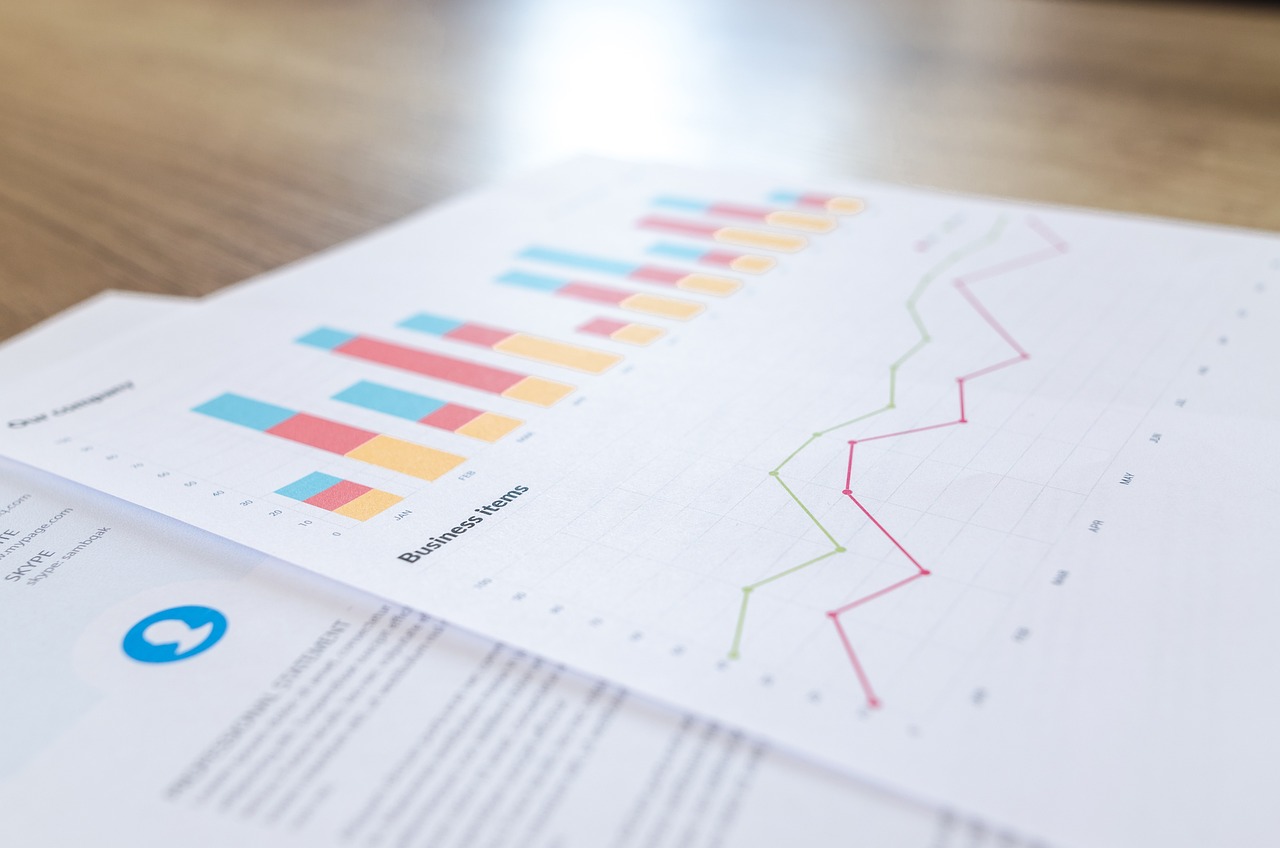

What is operating profit
Operating profit, also known as earnings before interest and taxes (EBIT), is a financial metric that represents a company’s profit after deducting operating expenses such as salaries, rent, utilities, and depreciation from its revenue. It is a measure of a company’s operational efficiency and profitability before taking into account interest expenses and taxes.

Why is operating profit important?
Operating profit is an important financial metric because it provides insight into a company’s ability to generate profits from its core operations. Operating profit is the amount of revenue left over after deducting operating expenses, such as wages, rent, and cost of goods sold, from total revenue. It allows businesses to measure efficiency, predict future profitability, and helps to evaluate key business performance metrics.
Operating profit can also be used to compare the performance of different companies in the same industry. This allows investors to identify which companies are generating strong profits from their core operations and which may be struggling to do so.
Operating profit formula and calculation
The formula for calculating operating profit is:
Operating Profit = Total Revenue – Cost of Goods Sold (COGS) – Operating Expenses
- Total Revenue
- The total amount of revenue generated from sales or services
- Cost of Goods Sold (COGS)
- The direct costs associated with producing the goods or services sold by the company, such as raw materials, labor, and manufacturing overhead
- Operating Expenses
- The indirect costs associated with running the business, such as salaries, rent, marketing, and administrative expenses.
To calculate the operating profit, you need to subtract the total COGS and operating expenses from the total revenue. The resulting number represents the earnings generated by the company’s core operations.
Here we use a shoe shop as an example. Our shoe shop currently has a gross profit of $5,000, and operating expenses of $2.845. We will now add an asset, a computer purchased for $500.
Because the value of a computer will decrease over the course of its life, we have to reduce the amount it’s worth each year – this is known as depreciation. The average computer lasts about 10 years, so we can depreciate it at 10% each year. Our computer will depreciate by $4.17 per month or $50 over the course of the year.
We enter this into our financial plan or profit and loss report and we now have an operating profit of $2,150.83.
Track your operating profit in Brixx
Get started with our forecasting software so that you can plan your business' future
What can operating profit tell you?
Simply put, operating profit is a good indicator of whether your business model works. It can provide several insights into a company’s financial performance, including:
Financial Efficiency
Operating profit can be used to assess a company’s efficiency in managing its operations. Higher operating profit margins indicate that a company is able to generate more revenue from its operations while keeping its costs under control.
Financial Sustainability
Operating profit can also provide insights into a company’s long-term sustainability. If a company has a consistently high operating profit margin, it may indicate that the company has a competitive advantage that enables it to maintain its profitability over the long term.
Financial Growth potential
Operating profit can be an important factor in evaluating a company’s growth potential. If a company has a high operating profit margin, it may have the resources to invest in new projects and expand its operations.
Financial Comparison
Operating profit can also be used to compare the financial performance of different companies within the same industry. By comparing the operating profit margins of different companies, investors can identify companies that are more efficient or have a better growth potential.
Example of operating profit
For example, let’s say a company has total revenue of $500,000, COGS of $200,000, and operating expenses of $150,000.
Operating Profit = $500,000 – $200,000 – $150,000
Operating Profit = $150,000
Therefore, the operating profit for this company is $150,000.
Operating Profit vs. Gross Profit
Both gross profit and operating profit are important indicators of a company’s financial health, but they provide different information. Gross profit is a measure of a company’s ability to generate revenue from its core operating activities, while operating profit is a measure of how efficiently a company is managing its operating expenses. Investors and analysts use both metrics to assess a company’s profitability and overall financial performance.
Operating Profit vs. Net Profit
In general, operating profit is considered a more accurate measure of a company’s profitability than net profit because it focuses only on the company’s core operations and excludes non-operational expenses that may distort the overall picture of the company’s financial performance. However, net profit is still an important metric because it provides a comprehensive view of the company’s overall financial health, including all of its expenses and sources of income.
Operating Profit vs. EBITDA
Operating profit and EBITDA (Earnings Before Interest, Taxes, Depreciation, and Amortization) are both financial metrics used to evaluate a company’s profitability, but they differ in their scope and the expenses they include.
EBITDA takes operating profit and adds back depreciation and amortization expenses, as well as any non-cash expenses. EBITDA is often used as a measure of a company’s cash flow because it strips out non-operating expenses and other factors that may not directly affect the company’s cash position.
While both metrics provide valuable insights into a company’s financial performance, EBITDA is considered a more comprehensive measure of profitability since it includes non-operating expenses and other factors that affect cash flow. However, it’s important to note that EBITDA doesn’t take into account interest payments, taxes, and capital expenditures, which are also important factors to consider when evaluating a company’s financial health.
How to manage your finances and cash flow
Tracking and analysing your operating profit is a key aspect to growing your business, yet it is important to note that it is not the only financial entity that you will need to keep your eyes on.
A financial forecasting tool such as Brixx can provide insight into a company’s ability to generate profits from its core operations in a visually appealing way, alongside highlighting a host of other financial features. You can get started with a free trial today and make the change needed to enjoy and look forward to reviewing your financial reports.
Frequently asked questions
What is an operating profit ratio?
An operating profit ratio is a financial ratio that measures a company’s ability to generate operating profits as a percentage of its net sales. The operating profit ratio, also known as the operating margin or operating income margin, is a profitability ratio that indicates how efficiently a company is managing its operations and generating profits from its core business activities.
Operating Profit Ratio = (Operating Profit / Net Sales) x 100%
Operating profit is the profit a company makes from its primary business activities, such as selling goods or services, and excludes non-operating expenses and income, such as interest expenses or investment gains. Net sales, on the other hand, represent the total revenue generated from the sale of goods or services after accounting for any returns, discounts, or allowances.
A higher operating profit ratio indicates that a company is generating more profits from its core operations and is therefore considered more efficient and profitable. A lower operating profit ratio may indicate that a company is struggling to generate profits from its primary business activities and may need to consider ways to reduce costs or increase revenue.
What is a good operating profit margin?
A good operating profit margin depends on the industry, company size, and other factors such as competition, pricing strategy, and economic conditions.
In general, a higher operating profit margin is better as it indicates that the company is generating more profit from each dollar of revenue it earns. However, what is considered a good operating profit margin can vary widely depending on the industry. For example, a software company may have a much higher operating profit margin than a grocery store because the former requires less overhead costs.
As a rule of thumb, a good operating profit margin can be defined as being above the industry average for the specific sector in which the company operates. Comparing a company’s operating profit margin to its competitors can provide insight into whether its profitability is healthy or not. It is also essential to consider the company’s historical performance and future growth prospects when evaluating its operating profit margin.
How to increase operating profit
There are several strategies a business can employ to increase its operating profit, including:
- Increase revenue
- Reduce costs
- Improve efficiency
- Focus on high-margin products/services
- Manage inventory
- Price optimization
- Invest in marketing
It’s important to note that implementing these strategies requires careful planning, analysis, and execution. It’s also important to measure the impact of each strategy to ensure that it is contributing to the overall goal of increasing operating profit.













